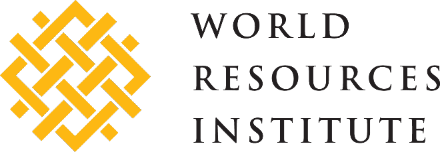Nature Crime: Illegal wildlife trade
AI Guardian 2.0
AI Guardian 2.0 uses a customized model created by PaddleX, a development tool for the PaddlePaddle platform. The tool uses internet technology to enable the comprehensive management of illegal wildlife trade on the Internet and to make wildlife protection more efficient. The tool adopts the latest large vision model (LVM) and was trained jointly by the International Fund for Animal Welfare (IFAW) and Baidu PaddlePaddle through semi-supervised learning. The model will be upgraded regularly to incorporate the latest technology development and will expand the number and variety of species covered to keep up with latest trends in wildlife cybercrime.
Wildlife Sentinel
Wildlife Sentinel is an app to help staff at airports, airlines, and other aviation companies report suspected wildlife trafficking and corruption. The app is anonymous and is available for download on the Apple Store and Google Play Store.
Wildlife Witness
Wildlife Witness lets you report illegal trade. It makes it simple for you to watch out for wildlife and be part of the solution. It is the first global community action tool to tackle illegal trade and gives you the power to make a positive difference. With the app you can report wildlife you see caught in trade, see reports you’ve made on a global map, learn about wildlife affected by trade, and learn what to look out for.
Social and Behavioral Change Online Community of Practice
A community of conservation practitioners, non-governmental organizations, government agencies, academics, researchers, social marketers and advertisers who believe that behavioural science approaches can help to reduce demand for illegally traded wildlife products.
Tool for Rapid Assessment of Wildlife Markets in the Asia-Pacific Region for Relative Risk of Future Zoonotic Disease Outbreaks
The tool helps to assess wildlife markets and trade situations in the Asia-Pacific region to risks of future zoonotic outbreaks. The framework is intended to provide guidance to the region’s governments to assess the relative risk of potential new incidents of serious emerging infectious diseases associated with the trade in wildlife. The risk matrix, published in the One Health scientific journal, will initially be used to analyze wildlife markets in the Asia Pacific region. The evaluation tool recognizes the connection between people, nature and their shared environment, and provides a way for policy makers to take a holistic approach to ecosystem, animal and human health.
CITES Wildlife TradeView
Visualises CITES trade data over time, by species or by country.
Checklist of CITES Species
CITES (the Convention on International Trade in Endangered Species of Wild Fauna and Flora) is an international agreement between governments that aims to ensure that international trade in specimens of wild animals and plants does not threaten their survival. The Checklist of CITES Species allows the exploration of more than 36,000 species of animals and plants and their degree of protection.
CITES Trade Database
The Convention on International Trade in Endangered Species of Wild Fauna and Flora (CITES) Trade Database, managed by the United Nations Environment Program World Conservation Monitoring Centre (UNEPWCMC) on behalf of the CITES Secretariat, is unique and currently holds over 13 million records of trade in wildlife and over 34,000 scientific names of taxa listed in the CITES Appendices. Around a million records of trade in CITES-listed species of wildlife are currently reported annually and these data are entered into the CITES Trade Database (an Oracle relational database) as soon as they are received by UNEP-WCMC. CITES annual reports are the only available means of monitoring the implementation of the Convention and the level of international trade in specimens of species included in the CITES Appendices. The CITES Trade Database can be queried and data downloaded from the CITES website (www.cites.org) or the UNEP-WCMC website (http://unep-wcmc.org/citestrade). You can contact UNEP-WCMC directly (see Annex 6 for contact details) if you have a specific data request that you are unable to answer using the online data querying facilities.
Species+
Species+, developed by United Nations Environment Program World Conservation Monitoring Centres (UNEP-WCMC) and the CITES (Convention on International Trade in Endangered Species of Wild Fauna and Flora) Secretariat, is a website designed to assist Parties with implementing CITES, Convention on the Conservation of Migratory Species (CMS) and other multilateral environmental agreements (MEAs). Species+ provides a centralised portal for accessing key information on species of global concern. In particular, Species+ contains information on all species that are listed in the Appendices of CITES and CMS, as well as other CMS Family listings and species included in the Annexes to the EU Wildlife Trade Regulations.
Identification Guide for Ivory and Ivory Substitutes
The information contained within this book was originally developed for the wildlife law enforcement community in connection with its mandate to enforce international endangered species trade regulations and restrictions. Thousands of copies of previous editions of this guidebook have been distributed in three languages throughout the world. The goal is to provide wildlife law enforcement officers, scientists and managers with a visual and non-destructive means of tentatively identifying the authenticity and species origin of suspected ivory for enforcement purposes, including a “probable cause” justification for seizure of suspected illegal material, at ports of entry. Emphasis also remains on carved ivory, mostly because whole teeth are easily identified.


